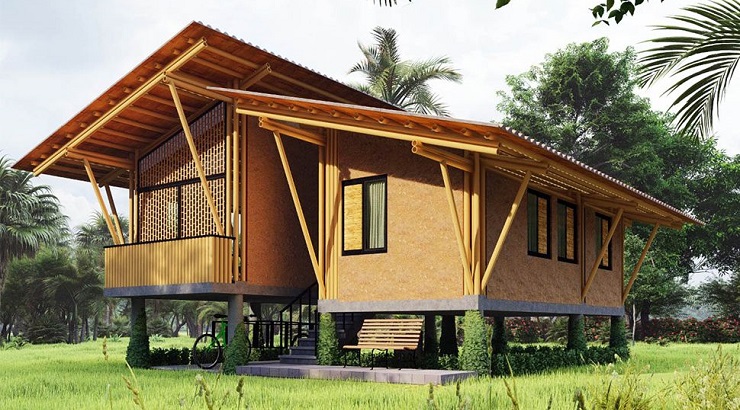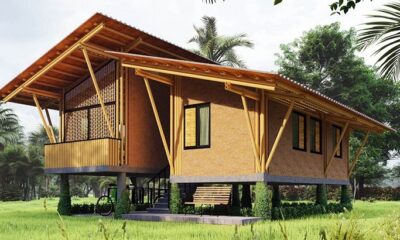Green Building
How to Build With Bamboo
Bamboo is extensively used for construction of walls and partitions.

Bamboo is becoming increasingly popular as a construction material due to its affordability compared to the high cost of steel.
Its cost-effectiveness, coupled with its strength, sustainability, and versatility, has made it an attractive alternative in various construction applications.
The application of bamboo construction techniques is achieved through a structural framing method that shares similarities with conventional timber frame design and construction.
When utilizing bamboo, the floor, walls, and roof are interconnected, mutually depending on each other to maintain overall stability.
Bamboo construction techniques
Here are a few innovative ways to build with bamboo.
1. Bamboo for foundations
Recently, extensive exploration of bamboo construction techniques has included innovative experiments employing it within foundation systems.
Although bamboo is not conventionally used as steel reinforcement in foundations due to its structural properties compared to steel, it is prone to decay when in contact with moisture.
However, this is issue is partially solved by treating bamboo with special chemicals to enhance its durability and strength – allowing its use as a form of reinforcement in foundations of low-rise and non-conventional structures.
Bamboos are used in various shapes and forms to build foundation.
2. Bamboo for walls construction
Thanks to its strength, flexibility, and eco-friendly nature, bamboo is often used for construction of walls and partition in regions where the plant is readily available.
Bamboo construction techniques for walls involve using the material in structural frameworks such as cladding. As in the case with foundations, bamboo can be treated to enhance its durability, usability, and fire resistance.
3. Bamboo as a roofing material
The natural strength, flexibility, and lightweight nature of bamboo makes it a suitable roofing material.
Bamboo roofing techniques include bamboo as a primary roofing material or in composite forms – providing resilience against weather elements.
RELATED: Unlocking Steel’s Key Benefits for Construction Projects
Bamboo can be treated to improve its usability, durability, and fire resistance. However, challenges in scalability, standardization and regional building codes often hinder its widespread application as a roofing material.
4. Bamboo for scaffolding
With a tensile strength of up to 28,000 psi, and higher in some cases, bamboo is able to bear heavy loads without breaking despite being a lightweight material.
Indeed, bamboo is increasingly becoming a highly endorsed material for scaffolding, even for tall buildings.
To build scaffolding, cane extensions are obtained by securing cane ends together using multiple ropes. These ties are strategically placed so that the nodes fit snugly within the lashings under the vertical downward forces.
This technique offers significant benefits as it allows for the realignment of the joints to the correct angles when needed.
Advantages of bamboo construction
– Strength: Bamboo has high tensile strength because its fibers run axially.
– Fire resistance: Bamboo can withstand temperature up to 4000o C due to the presence of high value of silicate acid and water.
– Lightweight: The low weight of bamboo allows them to be easily displaced or installed.
– Safety: Unlike other building materials like cement and asbestos, bamboo poses no danger to health and environment.
– Costs: Bamboo is cost-effective and easy to use.
Disadvantages of bamboo construction
– Shrinkage: Bamboo experiences greater shrinkage compared to timber, particularly during water loss.
– Jointing: Despite the existence of numerous jointing techniques, the structural reliability of bamboo remains uncertain.
– Durability: Bamboo requires treatment against insect or fungus attack before being utilized for building purposes.
With that being said, bamboo is unlikely to replace steel entirely.
Indeed, steel-reinforced concrete remains the most common building material globally. Developing countries consume close to 90% of the world’s cement and 80% of its steel, according to a study by Future Cities Laboratory.












